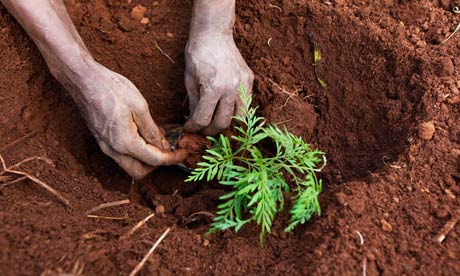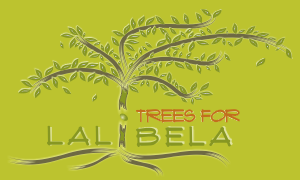
Data & facts
In the first instance, what drove this team to begin their voluntary cooperation was their love of nature and their involvement in environmental protection. In their endeavours to work against the dramatic and progressive deforestation, they established a private organisation in 2014 and began a reforestation project in Lalibela. The organisation is approved by the authorities and will be also officially supported. The surface area currently under cultivation extends to around 1.3 hectares.
With the help of the Austrian NGO "people together", who have made the necessary start-up financing possible, up until today, more than 6,000 trees have already been planted (Figures correct as of July 2015).
The project orientates itself with the "Green belt movement" of Prof. Wangari Maathai.
Courtesy of an intensive publicity campaign in the community and the surrounding areas, some of the area's farmers are already earning modest additional income arising from their work in the nursery. see: fields of activity > economic perspectives >
What has been achieved so far?
Irrigation
Since the project enjoys the support of the local authorities, a dedicated water supply from the local water network has been laid.
The plantation is being laid out in terraces so that the water for the trees can be more easily retained and unhindered run-off down the steep slopes (leading to both loss of water and soil erosion).
Tree nursery
At the outset of the project, seedlings needed to be purchased, however, after the first year, seeds from the first year can be successfully germinated to continue the process.
Work in the nursery is conducted exclusively according to the most modern ecologically sound criteria. There is zero pesticide use and, instead of chemical fertilizers, bio-compost is the automatic choice.
To ensure the undisturbed growth of the trees, the plantation will be fenced in to ensure that cattle cannot enter and damage the work of the site. In addition, the site is monitored from guard-posts to ensure that theft and trespassing are impossible.
What kind of trees are being planted?
 In large part, indigenous trees are being planted though there also some imported varieties. The crop mostly consists of nut and fruit trees. Additionally, a cross breeding of apple and mango is being attempted.
In large part, indigenous trees are being planted though there also some imported varieties. The crop mostly consists of nut and fruit trees. Additionally, a cross breeding of apple and mango is being attempted.
The long-term perspective is to bring a yearly fruit harvest to the local market and thus enhance the prospects of gainful employment for farmers in the locality.
Another goal is to prevent the unnecessary extinction of endangered species of local trees by carefully continuing to cultivate them.
Naturally, ecological considerations are foremost in the choice of trees to be planted. As an easy example, it is obvious to avoid planting eucalyptus trees since they have substantial water requirements. Their taproots sink up to twenty meters and draw large quantities of water from the soil and cause the local water table to sink lower. In many other instances, worldwide, this problem is often ignored since the high timber yield resulting from the rapid growth of eucalyptus trees is frequently more highly prized.
Local plants
- Olive (similar to our olive but produces no fruit)
- Jacaranda
- Thalo
- Pepper-tree
- Gravila
- Spatudia
- Avocado
- Guava
- Mango
Foreign plants
- Olive (the fruit-bearing variety)
- Apple
These trees were specifically chosen to be planted with a view to utilising the fruit crops.
Please look at our photo-gallery to get a clearer picture of the various trees being cultivated.

